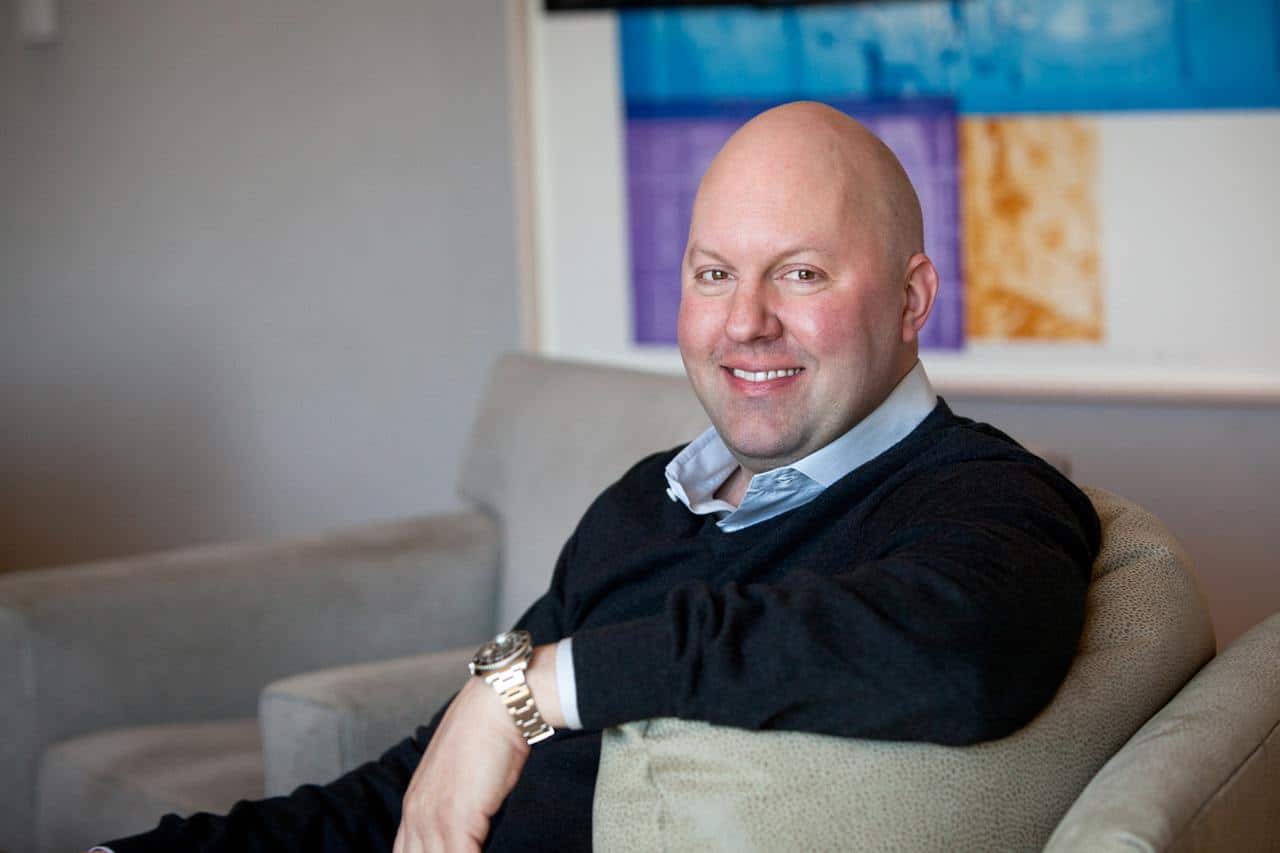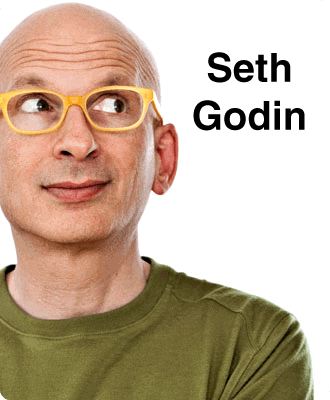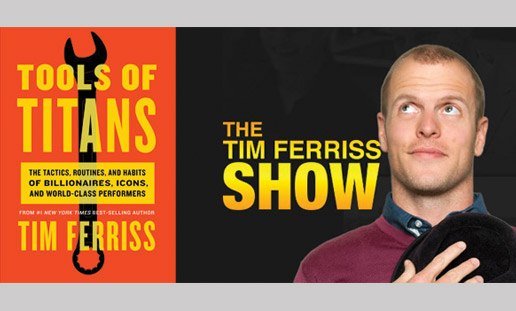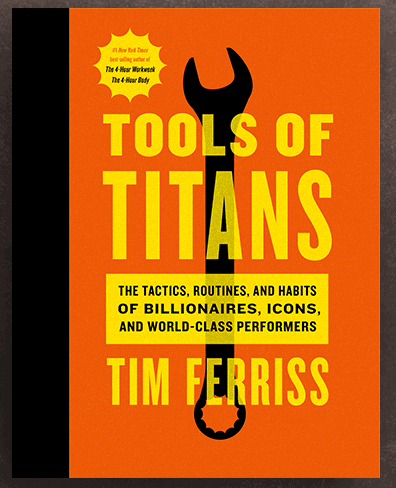How To Use Tim Ferriss’ Tools of Titans To Get What You Want
Use Tim Ferriss’ Tools of Titans to get what you want. Do this: Release every thought and emotion that undermines you; develop a “can-do” mindset; use the tools, routines and habits of the billionaires, icons, and world-class performers that he profiles in his new book.
THE GIST of my last article, Use The Seven Virtues To Attain Your Goals, was to remind readers that “attitude is everything”, and must be properly tweaked to develop the necessary mindset. As I said in the intro,
“… you’ve got the right mindset established before you begin your journey.”
In this article, I want to give you a sense of how Tim Ferriss’ Tools of Titans, can help you leap over hurdles, climb mountains and plant your flag on the highest peak.
But first I want to double down on this notion about the right attitude and mindset before we launch into Tim Ferris’ Tools of Titans.
Let’s dig in.
In this article, you’ll discover:
- Why you first need to let go of limiting believes before you try to achieve something meaningful;
- What Tim Ferriss says about his book that can help you get what you desire;
- Lessons from five standouts profiled in the book, as presented by Dr. Peter Diamandis; and
- The beautiful lessons of Siddhartha.
10 Things To Let Go Of To Be Happy and Healthy
I tripped over a good way to get the right mindset for achieving your goals whilst frittering away some time on Facebook. There, I saw this appealing “10 things to let go of to be happy” video that has been viewed more than 92 million times.
Guess it hit a nerve.
Let’s see if it hits yours, and then we’ll return to the mega successful titans profiled in Tim Ferriss’ book:
(Read how a gratitude practice can help release the stuff that imprisons you.)
Indulge me while I expand a bit on the ten things to “let go” of:
- Release toxicity in all its forms — people, places, times and events — excise whatever sickens you.
- Release regret — the past no longer exists except in your infinite replay loop.
- Release the need to be right — you have a choice to be happy or right.
- Release self-pity — it will push you down a deep dark hole and take away the ladder.
- Release negative self talk — be mindful of what you say to yourself and make sure that most of it is positive.
- Release the need to impress others — take that energy and build the life you deem impressive.
- Release limiting beliefs — a corollary to “Don’t argue for your limitations”, because plenty of others will, and all of it is disempowering.
- Release the need to please everyone — rather seek to please yourself in a manner that will help others.
- Release gossip and complaining — though cathartic in the moment, such a habit diminishes you.
- Release worrying about the future — like the past, it doesn’t exist (yet), so focus on now, and do today that will, day by day, deliver the future you want.
Notice that I use “release” rather then “let go”.
This is purposeful.
The word “release” is used rather than “let go”, simply because it’s stronger. “Let go” can be fairly passive, as in, “Let go of the pencil”; whereas “release” means to allow or enable an escape from confinement, or to be set free — a much stronger act.
You don’t “let go” from jail — you get released.
Similarly, these 10 things that make people unhappy can be so entrenched that it imprisons them.
Words are meaningful, and what you want is to be released from anything that keeps you from being all that you can be.
Tim Ferriss Reviews His Own Book, Tools of Titans
You’ve read the list of 10 things to let go of to be happy and healthy, and watched the video. Hopefully, you’ve done this thoughtfully and with the intention to clean up your mindset, and rinse it of the garbage that accumulates in the minds of us all.
Undoubtedly, you’ll need to repeat this process from time to time, for a lifetime of accumulated negativism is not extinguished in one moment, but requires repeated practice.
The next thing to do is grow the fledgling titan in you. For this, I turn to Tim Ferriss’ Tools of Titans. The byline tells the tale:
The tactics, routines and habits of billionaires, icons, and world-class performers.
The book is a distillation of Ferriss’ best podcasts, which have been downloaded more than 100 million times. This book format provides a much more efficient mode to get to the heart of the most important and valuable tidbits that his “Titan” interviewees share with us mere mortals.
Though unsaid, the premise of the value of the book is simply that we humans mimic one another. We learn from one another, particularly what we think is possible.
In 1953, it was thought the it was impossible for a man (or woman) to run a mile in four minutes. Then in 1954 it was achieved by Roger Bannister, who ran it in 3:59.4. Never before in recorded human history had it been done, but during the 50-some years since Roger Bannister’s epic achievement, more than 4,000 other have done so.
Roger showed us it was possible. Once that was realized, the impossible became possible to 4,000 people and counting.
When someone does something difficult, it paves the way for us too, and that is why Titans is a valuable read.
I got my copy a few days ago and — as advised by the author — have skipped through it back and forth, plowing into whatever grabbed me in the moment. The book is divided into Health, Wealth and Happiness sections. So far, I’ve mostly delved into the “Health” part.
In his Introduction of the book, Ferriss mentions an important point — perhaps the most important one to understand — which is this:
These world-class, titanesque performers don’t have superpowers.
Certainly, they may appear to be made of the stuff of gods, but in reality their “stuff” is made of uncommon habits diligently, regularly practiced, belief in themselves, uncommon grit, and the big questions they strive to answer.
That these standouts share certain common traits is unsurprising. In the Introduction of Titans (page xx) Ferriss summarizes them thus:
- More than 80% of the interviewees have some form of daily mindfulness or meditation practice.
- A surprising number of males (not females) over 45 never eat breakfast, or eat only the scantiest of fare (e.g., Laird Hamilton, page 92; General Stanley McChrystal, page 435).
- Many use the ChiliPad device for cooling at bedtime.
- Some gave rave reviews of the books Sapiens, Poor Charlie’s Almanack, Influence, and Man’s Search for Meaning, among others.
- Listening to single songs on repeat is a common habit to help with focus (page 507).
- Nearly everyone has done some form of “spec” work (completing projects on their own time and dime, then submitting them to prospective buyers).
- The belief that “failure is not durable” or variants thereof (see Robert Rodriguez, page 628).
- Almost every guest has been able to take obvious “weaknesses” and turn them into huge competitive advantages (see Arnold Schwarzenegger, page 176).
And there’s more.
Having spent several years interviewing hundreds of billionaires, icons, and world-class performers, Tim Ferriss has identified two core attributes:
1. Success, however you define it, is achievable if you collect the right field-tested beliefs and habits.
Someone else has done your version of “success” before, and often, many have done something similar. There is shared DNA you can borrow to help climb your own mountain.
2. The superheroes you have in your mind (idols, icons, titans, billionaires, etc.) have flaws, but they’ve maximized one or two strengths.
You don’t “succeed” because you have no weaknesses; you succeed because you find your unique strengths and focus on developing habits around them. The heroes in this book are no different. Everyone struggles, but because you do doesn’t mean that — if your persevere — you can’t succeed. Take solace in that.
At this point you’re primed to watch the following book summary animation. After that, I’ll share what Peter Diamandis said about Titans.
Peter Diamandis Reviews Titans
I follow the work of Peter Diamandis, engineer, physician, and entrepreneur. He’s best known for being the founder and chairman of the X Prize Foundation, the co-founder and executive chairman of Singularity University and the co-author of the New York Times bestsellers Abundance: The Future Is Better Than You Think and BOLD: How to Go Big, Create Wealth, and Impact the World.
He covered his thoughts about Tim Ferriss’ Tools of Titans in a recent email, which I’d like to share with you, because it gives some really good insights found in the book through the examination of five people highlighted in the book: Tony Robbins, Peter Thiel, Marc Andreessen, Reid Hoffman and Seth Godin.
As Peter Diamandis summarizes it, these five titans offer the following five nuggets:
- Morning priming
- Not waiting to pursue your dreams
- Conviction without stubbornness
- Stimulating the subconscious mind
- Starting extremely small
Understanding what this means and how to put them into practice can help you achieve your desires.
The rest of this section comes from Diamandis’ summary of Tim Ferris’ Tools of Titans.
Morning Priming (Tony Robbins) 
Perhaps the world’s most renowned self-help guru, Tony Robins does his priming routine every morning after waking up, which is intended to produce rapid change in his psychology and physiology. It takes about 10 minutes to do in these three steps:
- Expressing Gratitude (3 minutes). Note the simple, common, everyday things for which to be grateful, such as the wind on your face, the resplendent sky or simply feeling warm. Let this gratitude fill you up, so that there’s an emotional component to it. When you’re grateful, anger abates, fear abates and you simply just feel better.
- Spiritual Exercise (3 minutes). Focus on whatever you conceptualize is that thing that is larger than yourself — God, your spirit, whatever this inner presence is to you. Recognize that it can heal you — your body, mind, emotions, relationships, finances — and let it do so.
- Three to Thrive (3 minutes). Tony Robins describes this final step as, “Focusing on three things that I’m going to make happen”. It can be three things to make happen today or over a longer period of time, but see it in your mind’s-eye as already completed and focus on the feeling of that.
Read my article, What The Science Says: 9 Ways Gratitude Improves Your Life.
There is No Need to Wait (Peter Thiel) 
PayPal founder and Facebook investor, Peter Thiel’s contrarian ideas have infused Silicon Valley. He has been an advocate of dropping out of school in favor of entrepreneurship, and there have been tens of thousands of applications for his Thiel Fellowship since he launched it in 2011.
In answer to the question, “What do you wish you had known about business 20 years ago?”, Peter Thiel says that he wishes he realized earlier in life that there’s no need to wait to start something.
If you’re planning to do something with your life, if you have a 10-year plan of how to get there, you should ask: Why can’t I do this in six months? Sometimes, you have to actually go through some complex 10-year trajectory, but it’s at least worth asking whether that’s the story you’re telling yourself, or whether that’s the reality of what really needs to happen.
Strong Views, Loosely Held (Marc Andreessen) 
This phrase was on Marc Andreessen’s Twitter bio for years. Marc — the co-founder of Netscape and co-founder and general partner of Silicon Valley venture capital firm Andreessen Horowitz– explains what the phrase means in Titans.
He says that most people go through life and never develop strong views on things; rather, they typically run with the herd and buy into the consensus. He didn’t. Instead, Andressesen looks for things that are out of consensus, something very much opposed to the conventional wisdom, while at the same time staying light-footed enough to be able to adapt in light of new information.
Give the Mind an Overnight Task (Reid Hoffman) 
Reid Hoffman is an Internet entrepreneur, venture capitalist, author, and the co-founder and executive chairman of LinkedIn. His habit is to jot down problems in a notebook that he wants to his mind to work on overnight. This helps him ruminate over different ideas in his subconscious to start his next day primed with solutions.
It was Thomas Edison who said, “Never go to sleep without a request to your subconscious.” Here is Reid speaking on his tactic:
What are the kinds of key things that might be constraints on a solution, or might be the attributes of a solution, and what are tools or assets I might have? … I actually think most of our thinking, of course is subconscious. Part of what I’m trying to do is allow the fact that we have this kind of relaxation, rejuvenation period in sleeping, to essentially possibly bubble up the thoughts and solutions to it.
To Create Something Great, Start Extremely Small (Seth Godin) 
The prolific and insightful Seth Godin has authored 18 best-selling books on the way ideas spread, marketing and strategic communication. His ideas on “starting small to go big” has impacted many entrepreneurs and every day people, like me.
In the words of United States Army general Creighton Abrams, “When eating an elephant, take one bite at a time.” Here is Seth Godin on starting small:
My suggestion is, whenever possible, ask yourself: What’s the smallest possible footprint I can get away with? What is the smallest possible project that is worth my time? What is the smallest group of people who I could make a difference for, or to? Because smallest is achievable. Smallest feels risky. Because if you pick smallest and you fail, now you have really screwed up… We want to pick big.
Infinity is our friend. Infinity is safe. Infinity gives us a place to hide. So, I want to encourage people instead to look for the small. To be on one medium in a place where people can find you. To have one sort of interaction with one tribe, with one group where you don’t have a lot of lifeboats.
And all this, finally, brings me to Siddhartha.
The Bottom Line Lesson of Siddhartha
I’ll leave you with Siddhartha; this being the most surprising thing that I’ve so far encountered in Titans.
Herman Hesse wrote the book in 1951, I think. I first read it as a teenager. Every few years since then, I read it again.
It so happens that Siddhartha is recommended by many of the big guns interviewed by Tim Ferriss in Titans.
Tim writes that there’s one takeaway that Naval Ravikant (page 546) has reinforced in him several times. Ravikant retells the story of Herman Hesse’s protagonist, Siddhartha, a monk who looks like a beggar, who travels to a city and falls in love with a famous courtesan named Kamala. He attempts to court her, and she asks,
“What do you have?”
Later, a well-known merchant similarly asks,
“What can you give that you have learned?”
Siddhartha’s gives the same answer to each question, which ultimately is accepted by both the courtesan and merchant. And, ultimately, he acquires all that he desires.
Merchant: “. . . If you are without possessions, how can you give?”
Siddhartha: “Everyone gives what he has. The soldier gives strength, the merchant goods, the teacher instruction, the farmer rice, the fisherman fish.”
Merchant: “Very well, and what can you give? What have you learned that you can give?”
Siddhartha: “I can think, I can wait, I can fast.”
Merchant: “Is that all?”
Siddhartha: “I think that is all.”
Merchant: “And of what use are they? For example, fasting, what good is that?”
Siddhartha: “It is of great value, sir. If a man has nothing to eat, fasting is the most intelligent thing he can do. If, for instance, Siddhartha had not learned to fast, he would have had to seek some kind of work today, either with you, or elsewhere, for hunger would have driven him. But, as it is, Siddhartha can wait calmly. He is not impatient, he is not in need, he can ward off hunger for a long time and laugh at it. ”
Tim Ferriss writes that he often thinks of Siddhartha’s answers in the following way:
“I can think” → Having good rules for decision-making, and having good questions you can ask yourself and others.
“I can wait” → Being able to plan long-term, play the long game, and not misallocate your resources.
“I can fast” → Being able to withstand difficulties and disaster. Training yourself to be uncommonly resilient and have a high pain tolerance.
What Tim wrote about Siddhartha has endeared me to him (Tim). I’ve respected him before, in part because I perceive him to be a younger, smarter version of myself, but his attachment to Herman Hesse’s magnus opus is like my own, and in that I feel him to be a kindred spirit.
As a matter of fact, I’ve even used the think/wait/fast triad in job interviews, if you can imagine that. (Disclosure: I remain unemployed.)
And hence, I’ve been compelled to write this review of Tim Ferriss’ Tools of Titans — with the able assists of Peter Diamandis and Tim himself — and encourage you to check it out and apply some of the insights and lessons to your own life.
You’ll be better for it!
Your Takeaway
Four things:
- Notice the attitudes that shape how your think and feel about things, paying particular attention to those that undermine attaining the life you want to experience.
- Release everything that locks you up.
- Develop the mindset that accepts your ability to get what you want and that drives you to shape the journey to get there.
- Adopt whatever tools, methods and considerations used by the billionaires, icons, and world-class performers profiled in Tools of Titans.
That’s it.
Good luck!
Last Updated on November 27, 2018 by Joe Garma







